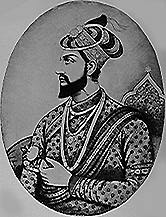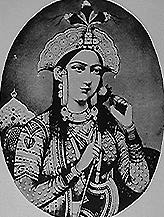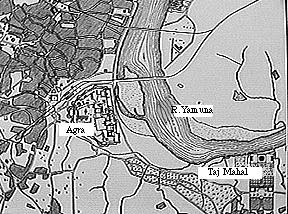
CROWN OF THE PALACE
Historical Significance of the Taj Mahal
 In 1612, Arjumand Banu Begam, better known by her other name , Mumtaz Mahal was married to Shah Jehan (then Prince Khurram), the fifth mughal emperor. This marriage, although the emperor's second, was a real love-match, and Mumtaz was her husband's inseparable companion on all his journeys and military expeditions. She was his comrade, his counsellor, and inspired him to acts of charity and benevolence towards the weak and the needy. She bore him fourteen children, and died in childbed in 1630 (only three years after his accession to the throne) in Burhanpur in the Deccan
In 1612, Arjumand Banu Begam, better known by her other name , Mumtaz Mahal was married to Shah Jehan (then Prince Khurram), the fifth mughal emperor. This marriage, although the emperor's second, was a real love-match, and Mumtaz was her husband's inseparable companion on all his journeys and military expeditions. She was his comrade, his counsellor, and inspired him to acts of charity and benevolence towards the weak and the needy. She bore him fourteen children, and died in childbed in 1630 (only three years after his accession to the throne) in Burhanpur in the Deccan
 where she had accompanied him on a military campaign. Overpowered by grief, Shah Jehan was determined to perpetuate her memory for immortality and decided to build his beloved wife the finest sepulchre ever - a monument of eternal love. It was Shah Jehan's everlasting love for Mumtaz that led to the genesis of the Taj Mahal. The sad circumstances which attended the early death of the empress who had endeared herself to the people inspired all his subjects to join in the emperor's pious intentions. After twenty-two laborious years, and the combined effort of over twenty thousand workmen and master craftsmen, the complex was finally completed in 1648 on the banks on the river Yamuna in Agra, the capital of mughal monarchs.
where she had accompanied him on a military campaign. Overpowered by grief, Shah Jehan was determined to perpetuate her memory for immortality and decided to build his beloved wife the finest sepulchre ever - a monument of eternal love. It was Shah Jehan's everlasting love for Mumtaz that led to the genesis of the Taj Mahal. The sad circumstances which attended the early death of the empress who had endeared herself to the people inspired all his subjects to join in the emperor's pious intentions. After twenty-two laborious years, and the combined effort of over twenty thousand workmen and master craftsmen, the complex was finally completed in 1648 on the banks on the river Yamuna in Agra, the capital of mughal monarchs.

The origin of the name the "Taj Mahal" is not clear. Court histories from Shah Jehan's reign only call it the rauza (tomb) of Mumtaz Mahal. It is generally believed that "Taj Mahal" (usually translated as either "Crown Palace" or "Crown of the Palace") is an abbreviated version of her name, Mumtaz Mahal (Exalted One of the Palace).

 Home Page
Home Page